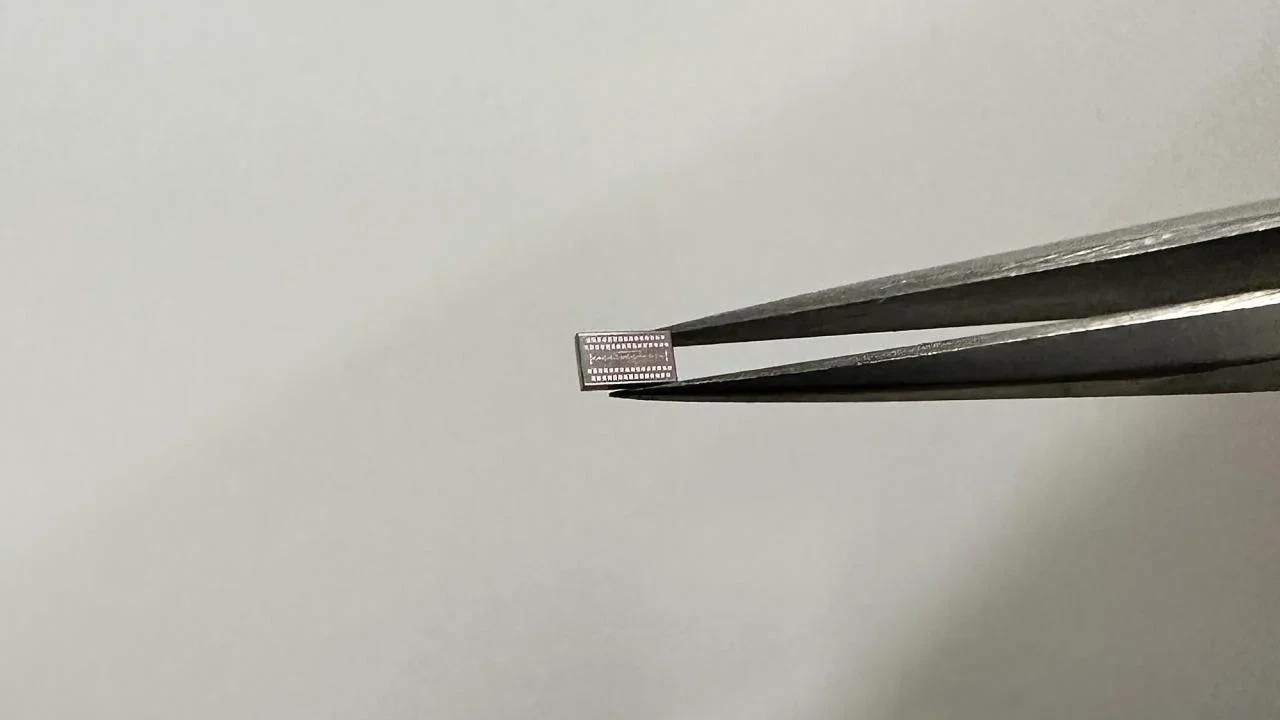
This prototype millimeter-wave radar sensor developed at UC Davis is capable of measuring extremely small vibrations and movements while being energy-efficient and cheap to produce. Image Credit: Omeed Momeni/UC Davis
Fast-moving electromagnetic waves are sent to targets by millimeter-wave radars, which use the waves’ reflections to determine the objects’ location, velocity, and movement. Millimeter waves’ advantages include their inherent sensitivity to minute motions and their capacity to focus on and gather information from tiny objects.
The new sensor is better than or on par with the most precise sensors in the world as it employs a cutting-edge millimeter wave radar design to detect vibrations a thousand times smaller and changes in a target’s position a hundred times smaller than a strand of human hair. However, this one is smaller than its competitors, costs less to make, and has a longer battery life.
The research effort was spearheaded by Professor Omeed Momeni and his lab at the Department of Electrical and Computer Engineering. The Foundation for Food & Agriculture Research, or FFAR, is funding an ongoing initiative to create a low-cost sensor that can monitor the water condition of individual plants.
The crucial first step in demonstrating its viability is provided by this new radar. The research is published in the IEEE Journal of Solid-State Circuits’ September 2023 issue.
Challenge of Millimeter Waves
The electromagnetic frequency between microwaves and infrared, extending from 30 to 300 gigahertz, is known as millimeter wave. It supports high-speed communication networks such as 5G and is coveted for its short-range sensing capabilities. However, due to high power consumption and the restricted performance of semiconductors at these frequencies, it might be difficult to deal with.
The key challenge the team encountered during its first year of development of the sensor was zeroing in on the target source. There was so much noise that the researchers’ sensors were washed out when they tried to pick up the sensitive signal of a delicate leaf thinning.
It seemed really impossible because the noise levels that we were looking at were required to be so low that almost no signal source could actually handle it.
Omeed Momeni, Professor, Department of Electrical and Computer Engineering, University of California, Davis
His team noted they would need to develop a radar chip that was 10 times more powerful and accurate than the current state-of-the-art design, something that felt reliant upon technological advancements that might not happen for years. At one point, they were not sure if they could overcome the challenge.
Tuning in to a Different Frequency
Sometimes, all that is required is an idea that addresses the problem from a different perspective. This brought Hao Wang, a Ph.D. candidate in electrical engineering at Momeni’s High-Speed Integrated Systems Lab who contributed to the sensor research before completing his studies in 2021, into the picture.
While meeting with Momeni one day, Wang had an idea to circumvent technological constraints: why not cancel out the noise with itself? That would potentially fix the problem with their sensors, and Wang was working on a semiconductor design for his dissertation to achieve precisely that.
This was not out of thin air, a brand-new concept. This was based on what we [in Momeni’s lab] have accumulated from research throughout the years—and then you innovate more.
Hao Wang, Ph.D. Student, Department of Electrical and Computer Engineering, University of California, Davis
The scientists worked rapidly to put together a prototype to put Wang’s proposal to the test. It worked the first time.
The prototype was successful because it allowed them to treat the level of noise received by their sensor as a simple arithmetic issue. They removed the extraneous noise while preserving the sensitivity of their measurement and the integrity of their data.
The millimeter wave sensor could detect all of the information it required using this approach without being “drowned out” by noise. This breakthrough was responsible for the sensor’s remarkable accuracy rates.
Wang’s chip is also easy to manufacture and has a unique architecture that significantly enhances the millimeter wave sensor’s energy efficiency. These new developments could tackle two of the most critical difficulties confronting millimeter wave sensors: high energy consumption and restricted semiconductor transistor performance in terms of noise, gain, and output power.
As the team continues to develop and iterate on its idea, they are eager for researchers to try it out. Outside of their FFAR research, they feel it has promise for detecting structural integrity in buildings and enhancing virtual reality, but they believe it has considerably more potential than they recognize.
Journal Reference
Wang, H., et al. (2023) A Highly Accurate and Sensitive mmWave Displacement-Sensing Doppler Radar with a Quadrature-Less Edge-Driven Phase Demodulator. IEEE Journal of Solid-State Circuits. doi:10.1109/JSSC.2023.3266704